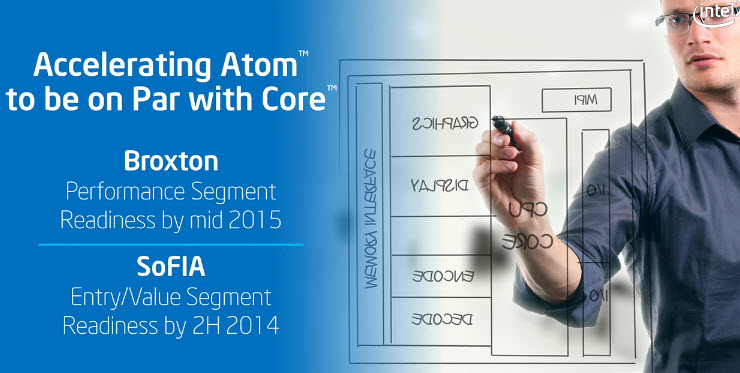Intel chief executive Brian Krzanich said that the world’s biggest chip maker will drive its Atom family of chips into more devices and accelerate the company’s move into low-end computing devices, including smartphones, tablets, and the internet of things.
Krzanich said at Intel’s analyst meeting that Intel is working on two new Atom processors — code-named Broxton and Sofia — that will be launched in the market at an accelerated schedule. That means that Intel won’t hold up Atom, which is more low-power and tablet friendly, because of a focus on its Core, or PC processors. The shift toward tablets is happening faster than expected, and it is why Intel appointed Krzanich as CEO last spring.

Above: Intel CEO Brian Krzanich
Intel will also focus on the high-end data center market, making chips for servers, supercomputers, and enterprises. But the renewed focus on the low end represents a change at Intel, which by its own admission ignored tablets in favor of the traditional PC for too long.
Krzanich said the company’s new mantra will be, “If it computes, it does it best with Intel.” So Intel will deliver chips based on its variety of sub-architectures, as appropriate. Those include Xeon in data centers, Core for PCs, Atom for new devices, and Quark for the internet of things.
Intel is already making strides in the low end. Krzanich said Intel chips will be used in sub-$100 tablets that will be sold during the holidays. Intel chips will also be in sub-$300 laptops in the next quarter.
Intel will bring one of its Atom processors to market in a novel fashion. From its Infineon chip business, Intel has an ARM-based 3G chip. Intel will sell that chip during 2014. But it will strip out the ARM core, replace it with an Intel Atom processor, and then ship that chip into the market by the end of 2014. That Infineon ARM-based chip is being made in an outside foundry. But with the Atom chip, Intel will shift the manufacturing to Intel’s own factories.
“Three months ago, that wasn’t on the roadmap,” Krzanich said.
Krzanich’s short-term goal is to produce four times as many chips for tablets in a short time, moving from 10 million chips to 40 million chips in short order. Intel will launch its Sofia Atom chip in 2014 for low-end devices. And it will launch a high-end Atom, Broxton, in 2015.
Intel will also use the innovations it makes in PCs and drive them into tablets at an accelerated pace. Intel plans to focus its mobile chips on high-end customers, rather than the broadest set.
On top of Atom, Intel is also focused on launching a Quark chip for the internet of things.
“Intel is smart to prioritize tablets over smartphones as more consumers see the benefits of having better performance in tablets than in phones,” said Patrick Moorhead, analyst at Moor Insights & Strategy. “Intel can also leverage Apple’s 64-bit messages as their entire new line is 64-bit. Details are limited, but it appears Intel also improved their roadmap with a much lower cost system-on-a-chip, called Sofia, which is highly integrated.”


